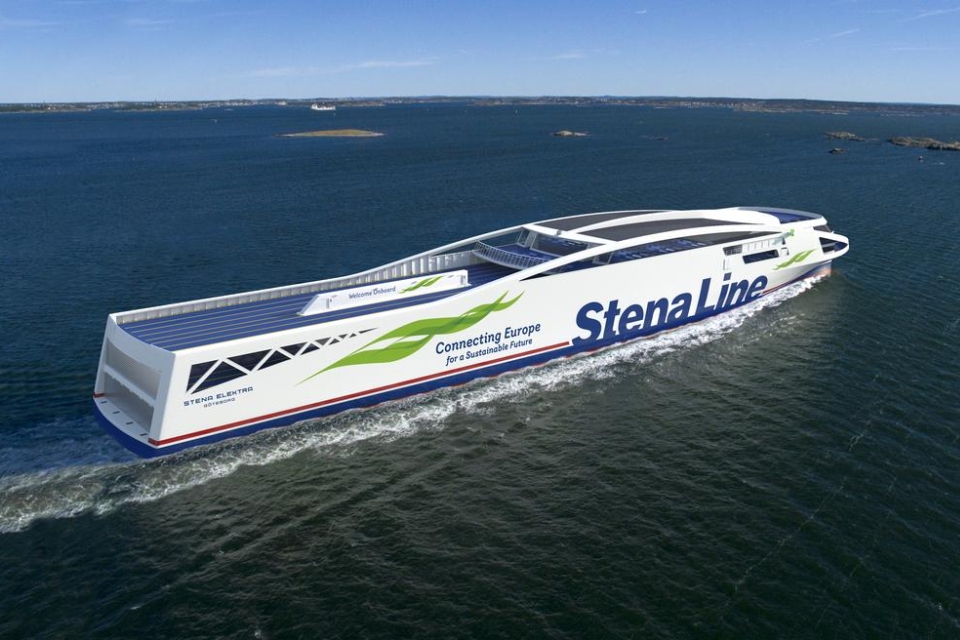Ferry operator Stena Line, Frederikshavn Municipality, and the Port of Frederikshavn have signed an agreement for making Gothenburg-Frederikshavn the world’s first fossil fuel free ferry line of its kind. The route is to be operated by two battery-powered Stena Elektra vessels launched by 2030.
Stena Line aims to reduce its total carbon emissions with thirty per cent by 2030 and the new Stena Elektra ferries play an important role in getting there. However, it will take more than just battery powered vessels. Onshore infrastructure, such as sustainable charging facilities, must be developed in parallel.
The ferry operator has earlier launched the Tranzero Initiative together with the Volvo Group, Scania and the Port of Gothenburg. The aim is to reduce carbon dioxide emissions linked to the Port of Gothenburg – the largest port in the Nordic region – by seventy per cent by 2030. In the new agreement, the Port of Frederikshavn commits to securing the necessary infrastructure in the port and its surroundings on the Danish side.
Also read: Stena Line plans to operate zero-emission RoPax vessels before 2030
‘Our ambition is to lead the development towards fossil fuel free shipping and sustainable transport at sea,’ says Stena Line‘s CEO Niclas Mårtensson. ‘That is why we are investing in new technologies and various alternative fuels. We are already ten years ahead of the international shipping industry’s target for reducing carbon dioxide emissions, but with Stena Elektra we are taking another big step on Stena Line’s sustainable journey, on the road to a completely fossil fuel free operation.’
Fossil fuel free RoPax vessels
The ferries will be the world’s first fossil fuel free RoPax vessels their size, measuring approximately 200 metres, with a capacity of 3000 lane metres and 1000 passengers.
In 2018 Stena Line had already invested in battery hybrid power on Stena Jutlandica, currently operating on the Gothenburg-Frederikhavn route. This has so far resulted in a reduction of carbon dioxide emissions by 1500 tonnes per year, equivalent to the annual emissions of 600 passenger cars.
Particulars of the Stena Elektra vessels are:
- Two fossil fuel free RoPax ferries (car and passenger ferries)
- Route: Frederikshavn – Gothenburg
- Starts operating the line by 2030
- Battery powered with a capacity of around 60-70 MWh, charged in port
- Shore infrastructure: need for a high voltage shore power cable of around 30-40 MW
- Crossing time: 3 hours, with one hour turnaround call/charging time
- Length: Approximately 200 metres
- Freight and vehicle capacity: approximately 3000 lane metres
- Passenger capacity: 1000-1500 passengers
Also read: Stena plans to use recycled batteries in charging stations at ports








